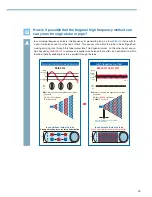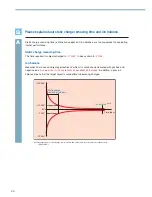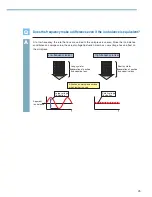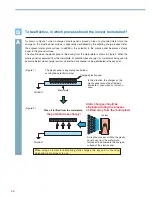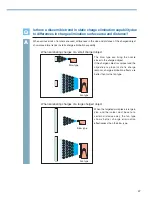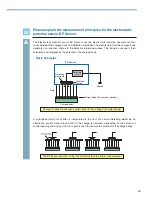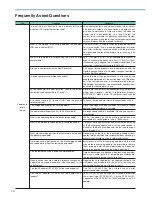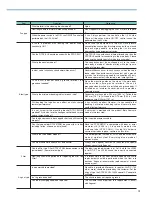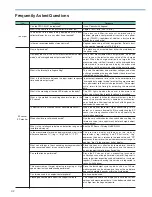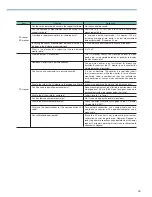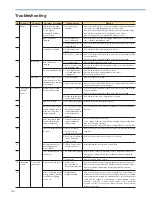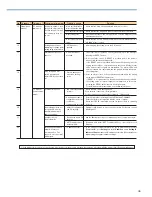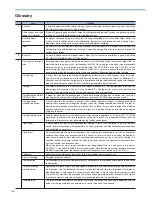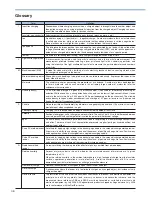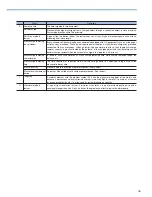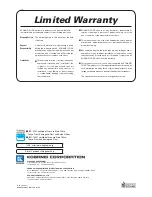
37
Term
Definition
C
D
E
F
G
H
I
Coulomb’s Law
Direct current type
ionizer (DC method)
Discharging needle
Dust generation
Electric field
Electrification
Electron
Electrostatic breakdown
Electrostatic capacity
Electrostatic discharge
(ESD)
Electrostatic induction
Electrostatic spark
EPA
ESA
ESDS
Ethernet
Farad (F)
Feedback-type ionizer
Flushing
Frequency
Frictional charging
Ground
High-frequency AC
method ionizer
Human body model
(HBM)
IEC standard
The size of the force exerting between two small charged objects is inversely proportional to the
square of the distance between the two objects, and proportional to the product of the two charges. Charges
with the same sign repel each other, while differing charges attract. This relationship is called Coulomb’s Law.
A type of high-voltage application method in corona discharge method ionizers. Devices using direct
current high voltage (DC) are called direct current type ionizers.
A needle-shaped electrode attached to the interior of a corona discharge method ionizer. A corona
discharge is generated from its tip, to generate ions.
Generation of dust or particles.
The gradient of a potential induced by existence of a charge. The force acting on an electric field is
expressed by Coulomb’s Law.
Phenomenon where electric charge accumulates on an object. Discharge occurs when the intensity of
an electric field induced in a charged object reaches the dielectric breakdown electric field strength of
media, causing multiple problems.
Tiny particles with negative charges revolving around the atomic nucleus like satellites.
Phenomenon where discharge of static electricity causes fusion, etc., of circuits in electronic parts.
Amount of charge per unit of voltage built up in a capacitor or other insulated conductor. Unit is F
(Farad).
Movement of electrostatic charges between objects of different potential.
Phenomenon where electrons inside a conductive object move when the conductive object is brought
close to a charged object, causing the surface facing the charged body to become charged with
opposite polarity of the charged object.
Phenomenon in which a certain amount of charge builds up and induces a discharge to an adjacent
conductive object.
ESD Protected Area. An area, space, or room designed to avoid risk to operators, and minimize the
risk of damage due to static electricity as a condition for handling ESDS or equipment.
Electrostatic Attraction. Attraction of particles to workpieces due to static electricity.
Electrostatic Discharge Sensitive Devices. Stand-alone devices, integrated circuits, or mounted parts
with the possibility of damage due to encounters with electric fields or electrostatic discharge during
normal handling, testing, or transportation.
A computer network standard. In LANs (Local Area Networks), a combination of Ethernet and the
TCP/IP protocol is common.
Farad (unit: F) is an SI unit of electrostatic capacity. When 1V is applied to a capacitor, and 1 C of
electrical quantity has accumulated, the electrostatic capacity of that capacitor is defined as 1 F.
A method involving sensing the amount of charge in workpieces targeted for charge removal, and
controlling the amount of discharging ions. Failure to accurately measure the amount of charge in the
workpiece could result in emission of ions of the opposite polarity, leading to a reverse charge.
When assembling parts, pressurized air is blown to prevent dust or particles from being attracted to
the parts.
Number showing how many times per second a phenomenon of periodic change occurs in electricity,
radio waves, sound waves, etc. The unit is Hz (hertz).
Charging induced by friction. The friction state can generate a large amount of charge due to pressure
application, heat generation, surface distortion, or rupture occurrence.
Refers mainly to the use of grounding wires for electrical connection between a charged object and
the earth to prevent conductor charging, and generally includes the meaning that a state of
equivalence is achieved when grounded.
High-voltage frequencies type in AC voltage type static charge removal devices (AC method ionizers),
for the generation of ions. The high-frequency AC method ionizer manufactured by Koganei operates
at 68000 Hz, to achieve an ion balance that is superior to other methods. The ordinary alternating
current (AC) method is 50/60 Hz.
A model for when a person with a build-up of static electricity touches a device, causing a break when
the charge is discharged via the device.
International standard set by the International Electrotechnical Commission (IEC), a body for
standardizing technologies related to electrical engineering and electronic engineering. Standards for
static electricity removal devices (ionizers) are also stipulated in the IEC regulations.

